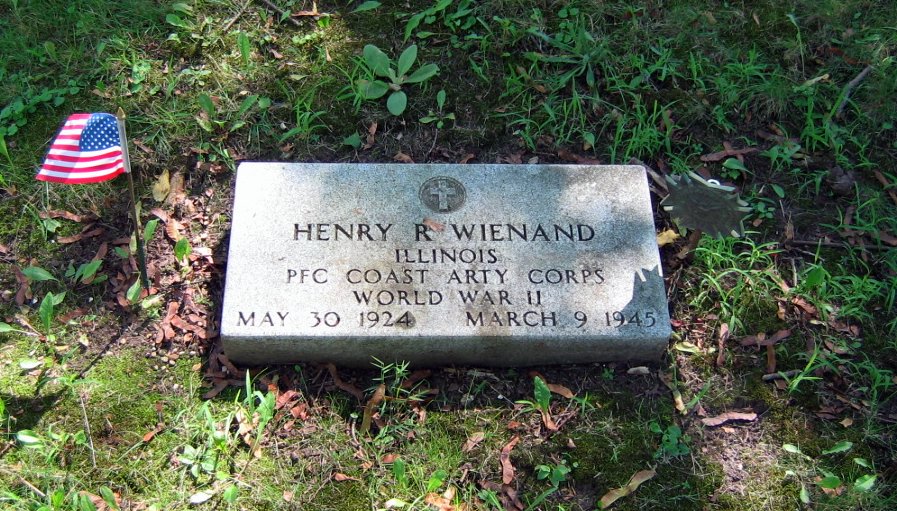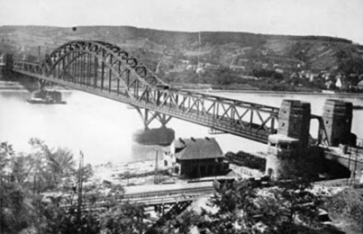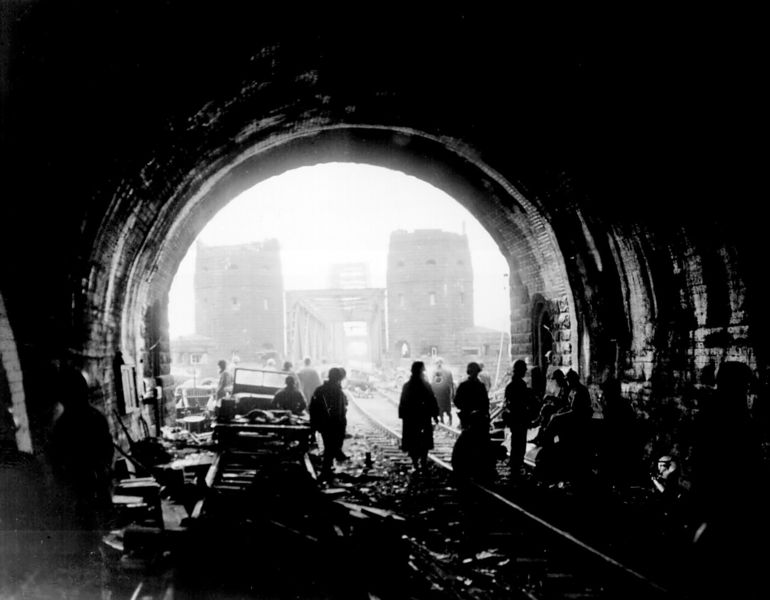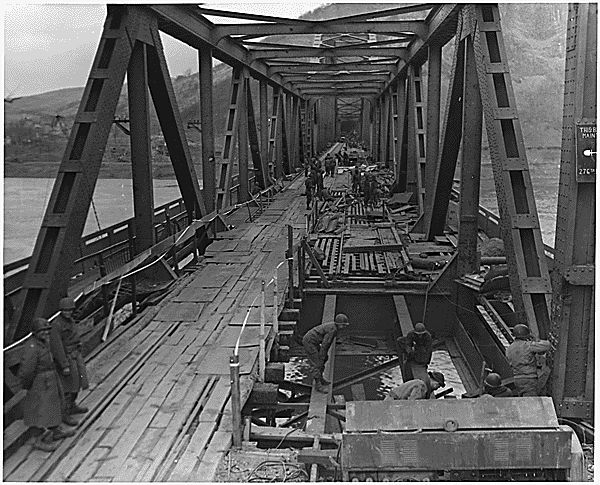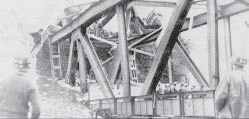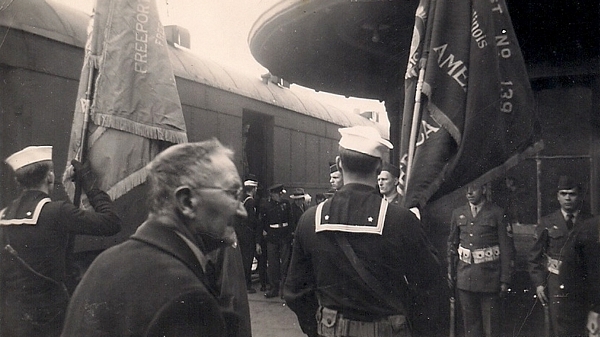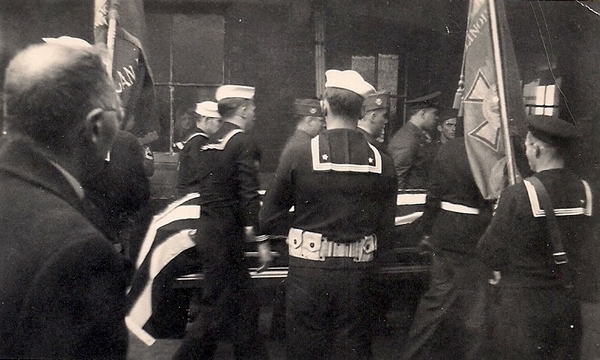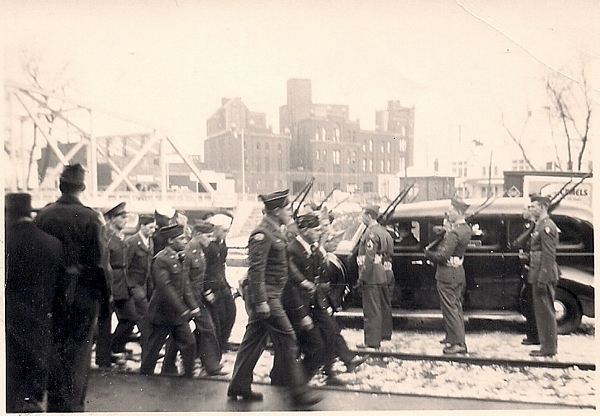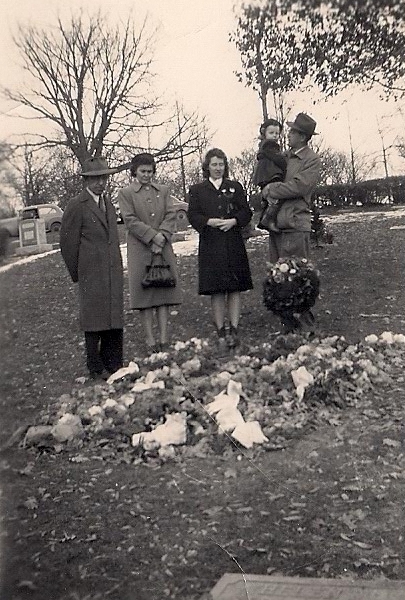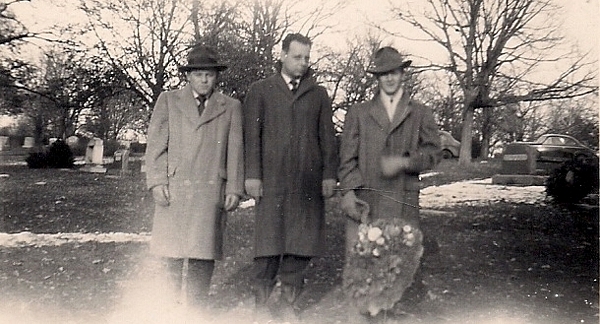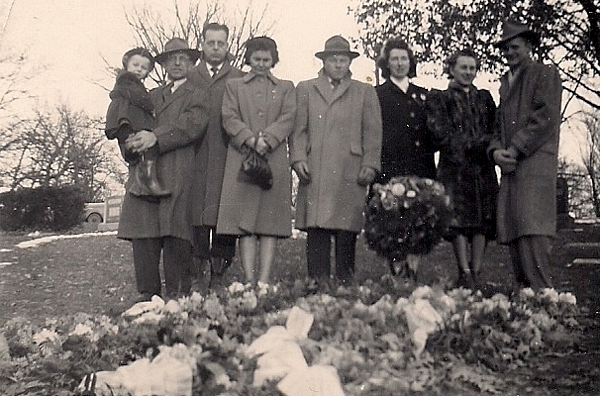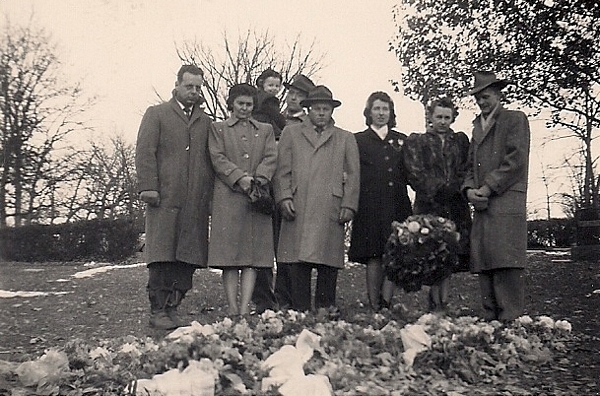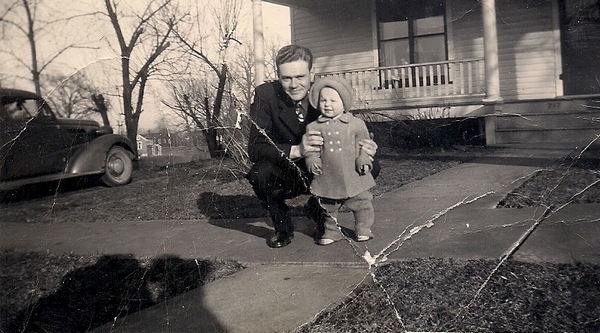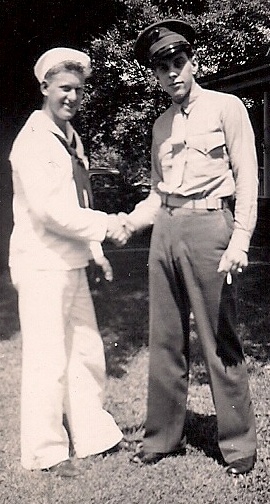Henry Robert Wienand
|
My uncle Bob Wienand was killed in action on March 9, 1945, near the bridge at Erpel, Germany. He enlisted at age 17 on April 30, 1943 at Fort Sheridan, Illinois, and trained at Camp Wallace, Texas. He was survived by his parents, Henry "Heinie" Wienand and Rose Stearns Wienand, and his sister Anna Wienand Bike. He was only 20 years old. Bob Wienand was a member of one of the first units to land on the Normandy beachhead. He was awarded the Purple Heart and the Presidential Citation. Originally buried at Henri Chapelle American Military Cemetery in Belgium, his body was returned to Freeport in December of 1947. He is buried at Oakland Cemetery alongside his parents. His commanding officer, Lieutenant Colonel A. E. Rackee, wrote, "He died a hero's death and proved himself to be a fine soldier. He and his comrades who fell in battle have not died in vain." |
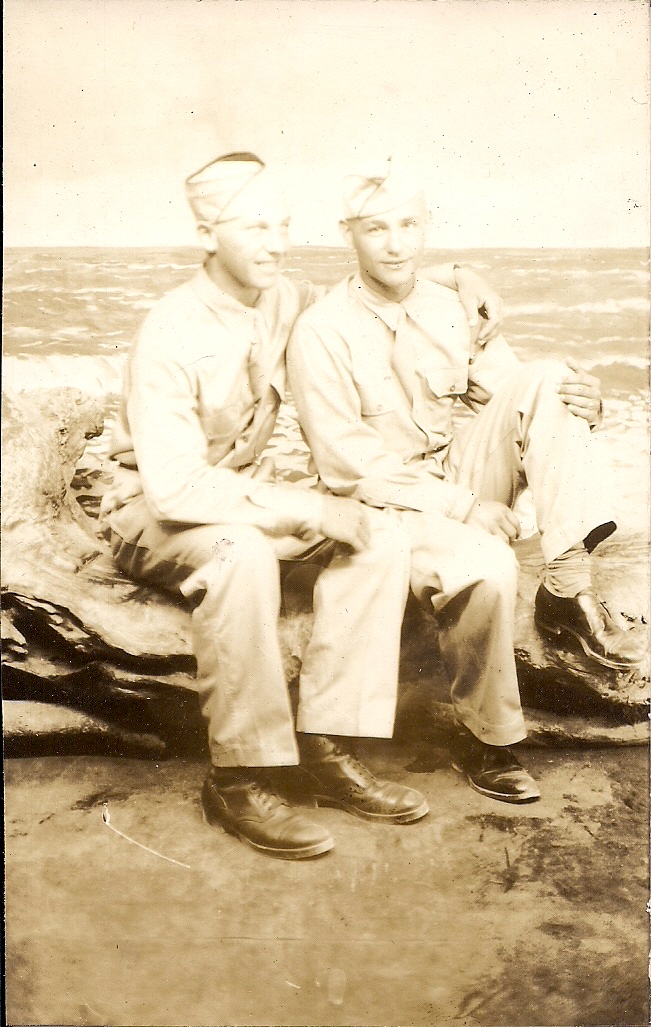
My uncle Bob Wienand,
on left, with a friend on the beach at Normandy.
|
The Bridge at Remagen, Germany
The bridge at the village of Remagen was built between 1916-1918 during the First World War as a way to supply troops. Finished in 1918, it served as a retreat path for the defeated German army. The Ludendorff Bridge was named after Germany's WWI general. When the French occupied this section of Germany after WWI, they filled the demolition chambers underneath the bridge with cement, making it very difficult to destroy the bridge. Originally designed as a railroad bridge, it was planked to also allow vehicular traffic. On March 7, 1945, the retreating Germans attempted to destroy the bridge to prevent allied troops from following them. There was a tremendous explosion. The bridge lifted up from its foundations and then settled back. American troops captured the bridge, allowing 8,000 soldiers plus hundreds of anti-aircraft artillery (AAA), tanks, trucks and jeeps to cross the bridge in the first 24 hours. The bridge had been badly damaged by German attempts to blow it up. The upstream truss had been completely severed, with only the downstream truss holding the entire weight of the bridge. Holes had been blasted in the floor of the bridge so only single-file, one-way east traffic was allowed.
Engineer battalions built pontoon and treadway bridges on both sides of the weakened railroad bridge while under heavy enemy fire, completing them within 24 hours. A small ferry that held one tank for each trip was built on the Rhine. This film about the engineers includes lots of footage about the bridge. MPs did a heroic job directing traffic on both sides of the bridge, efficiently allowing AAA to set up quickly to protect the bridge as much as possible. Adolph Hitler was infuriated by the successful capture of the Ludendorff Bridge by the Americans. He was certain it had been captured because of German treason. He singled out five German officers for immediate execution. Four of the five were shot to death, and the fifth man escaped execution only because the Americans had captured him. There had been 40 bridges across the Rhine. Hitler had plans for blowing up all of them, and succeeded with the 39 others. The allied troops didn't even have a contingency plan for capturing a bridge because it was so unexpected. Eisenhower said that the bridge was worth its weight in gold, and ordered as many troops and as much equipment as possible to cross the Rhine immediately. Hitler ordered an all-out attack on the Americans holding the bridge. On March 8, he sent dive bombers; all eight were shot down. On March 9, Hitler sent in jet bombers against the Americans for the first time in the war. The KG-76 flew its first mission with Arado 234 jet bombers against the Remagen Bridge two days after the first Americans went across. Kampfgeschwader 76 (KG-76) was a Luftwaffe bomber Group. The goal of KG-76 was to knock out the pontoon bridge, the treadway bridge and the Ludendorf Bridge with glide-bombing attacks. KG-76 reported high losses while attacking the bridge from March 9-13, reducing the number of usable planes to just 11 from an earlier 51. The great losses suffered at Remagen & Erpel by the Luftwaffe crippled them for the remainder of the war. KG-76 made almost suicidal attacks with SC 1000 bombs, and were given air support by ME 262A-2 jet bombers from KG-51. The attacks were almost continuous for five days. They tried to bomb the bridge from below. A group of underwater swimmers armed with explosives tried, but they were picked up by very powerful searchlights before they reached their objective. Werner Von Braun, who at that time was working for the Nazis, had developed a very powerful guided missile called the V2. Hitler ordered eleven V-2s to be fired from Holland, but none hit their target. Large areas of Remagen and Erpel were destroyed by the V-2s, and one landed near the bridge, shaking it like an earthquake, but none hit any of the bridges.
Thanks to the concentrated fire of the anti-aircraft groups, not a single German bomb or missile hit the bridges, while 40 German planes were shot down and many more crippled. On March 12, engineers
recognized the precarious nature of the Ludendorff bridge and closed
it for major repairs. All traffic went via the treadway and pontoon
bridges and the ferry.
On March 17, 1945, the seriously damaged Ludendorff Bridge collapsed into the Rhine River, killing 28 engineers who had been trying to strengthen it. But by then, the damage was done for the Germans. Pontoon and treadway bridges were in place, thousands of troops and tons of equipment were across the Rhine. Hitler's last major defense had been breached. Hitler had thrown everything at the bridge and the Americans who crossed it. Not expecting any bridge to be captured, German defenses were scattered all along the Rhine. On the day it was captured, only 20 German soldiers were in the immediate vicinity of the bridge. Large forces attempted to head to the Erpel area, but were stymied by a lack of gasoline. The capture of the Ludendorff Bridge saved thousands of lives and shortened the war in Europe. Shortly thereafter, the Americans encircled and trapped 300,000 German soldiers east of the Rhine. Enormous numbers of German troops surrendered. The Germans gave up the war effort on May 8, 1945, and victory in Europe had been achieved. This YouTube video shows the battle for the bridge, at about 2:27 shows the bridge from the railroad tunnel, and at about the 3:00 mark, shows the bridge. At 3:50, an anti-aircraft gun similar to the one Uncle Bob was on, is shown at the ramp of the Ludendorff Bridge: Here's a second video showing the allied troops crossing the bridge. At the very end, 0:34 of 0:35, it shows an anti-aircraft unit. Here's a view of the bridge from the air. Remagen is the town at bottom left. Erpel is at top right. The allies crossed from bottom to top: This short film shows anti-aircraft units at the bridge starting at about 3:45. My uncle Bob Wienand was one of the 8,000 who crossed the bridge in the first 24 hours, on March 7, 1945. His AAA was one of the first two dozen vehicles across the Ludendorff Bridge. After crossing the bridge, his platoon turned left toward the town of Erpel, Germany, and set up their anti-aircraft guns. On March 9, Hitler ordered jet fighters from the KG-76 to attack the bridge, the first time Germany used jet aircraft against the Americans. Bob Wienand was killed that day, the only allied soldier killed at the Remagen Bridge on March 9, 1945. |
|
In 1947, my grandparents elected to have Uncle Bob's remains returned to the U.S. The following photos were taken in December 1947.
|
Copyright 2002-present. Latest Copyright date February 26, 2015
